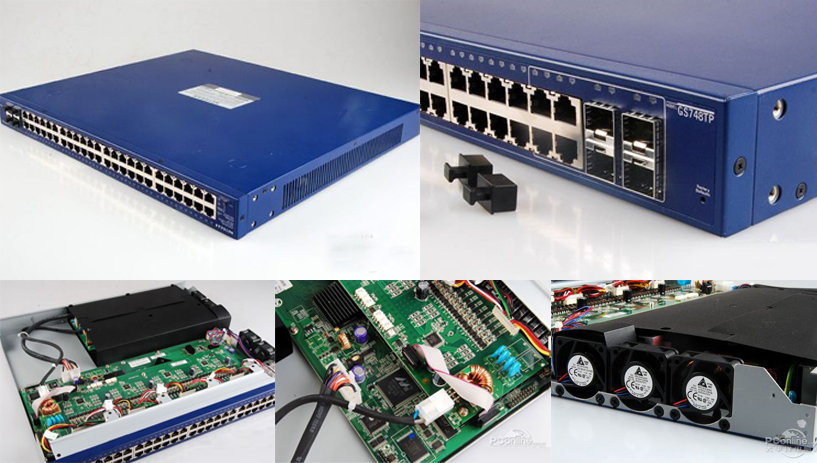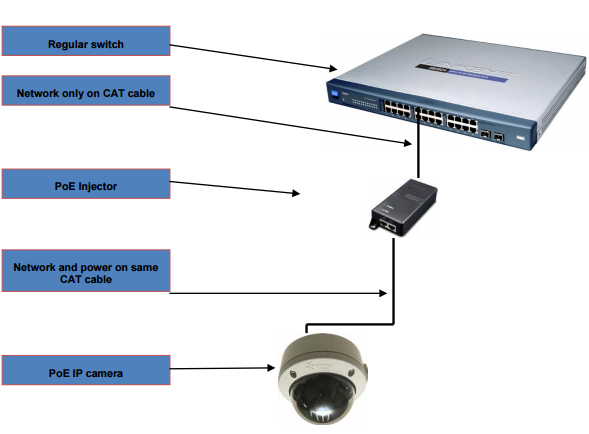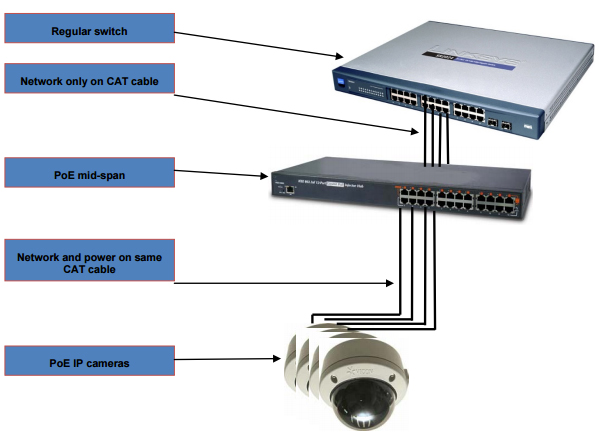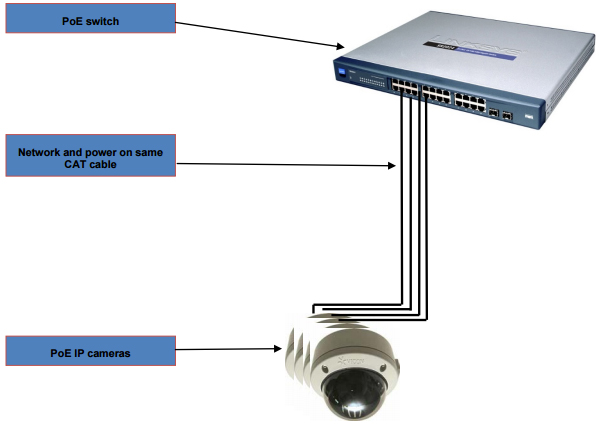
PoE network camera system: Injector vs Mid-Span vs PoE Switches
Power over Ethernet technology is no longer new, it has been widely used in many network applications, including the popular network video surveillance system. Utilizing PoE technology is quite simple, you just need to choose the right switch which complies IEEE standard for PoE.
IEEE standard for PoE includes IEEE802.3af and IEEE802.3at. IEEE 802.3af-2003 PoE standard provides up to 15.4 W of DC power (minimum 44 V DC and 350 mA) to each device. Only 12.95 W is assured to be available at the powered device as some power is dissipated in the cable. IEEE 802.3at-2009 PoE, also known as PoE+ or PoE Plus, is a new standard, provides up to 25.5 W of power.
To know details about the PoE standard, you can read my previously published articles:
- http://www.unifore.net/ip-video-surveillance/how-to-use-poe-technology-for-your-network-cameras.html
- http://www.unifore.net/ip-video-surveillance/6-things-you-should-know-about-power-over-ethernet-poe.html
Today, you can have many several different PoE sources to provide Power over Ethernet, these choices including PoE injector, PoE mid-span, PoE switches. According to the white paper from Vicon Security, each of these PoE sources has cons and pros.
#1. Using a PoE Injector
This is the quite old method, where the standard network is fed into an injector that adds (or injects) power to the cable and then continues to connect to the camera.

Pros:
- Simple to use
- Can be added onto existing networks with no need to change switches
- Can come in many shapes and sized
- Easy to mount anywhere
Cons:
- When multiple PoE devices are used, requires multiple injectors
- Price per camera is relatively high
#2. Using a PoE Mid-Span
An expansion of the PoE injector concept, where multiple devices can be connected and get PoE added onto their network connections from a single appliance.

Pros:
- Smaller installation footprint
- Can house any size power supply required
- Can be added onto existing networks with no need to change switches
- Lower price per channel than injector
#3. PoE switches
This is the most common appliance today and combines both the network side and the power, delivering them directly to the cameras.

Pros:
- All-in-one box with no additional appliance
- Same interface (i.e., switch web console) can be used to manage both network and power
- Much lower price per channel
Cons:
- Usually limited in power supply options based on the physical size of the unit and, therefore, the power supply it can house.
- If PoE cameras are added to existing network with non-PoE switches, those will need to be replaced with these.
- On failure powers down multiple cameras
Remark: the images originally deprive from the white paper published by Vicon Security.
Get My Latest Posts
Subscribe to get the latest updates.
Your email address will never be shared with any 3rd parties.
Scan me




